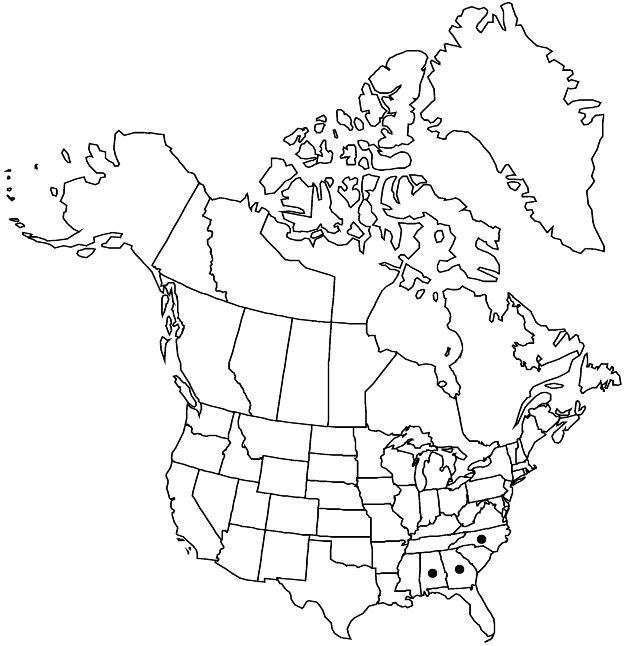Crataegus buckleyi
Biltmore Bot. Stud. 1: 25. 1901.
Shrubs or trees, 10–80 dm. Stems: compound thorns on larger trunks present; twigs: new growth reddish, glabrous, 1-year old dark reddish brown, 2-years old dark ashy gray; thorns on twigs straight to slightly recurved, 2-years old dark chestnut brown, slender, 2–4 cm. Leaves: petiole 1 mm wide, length 33–60% blade, glabrous, glandular; blade broadly elliptic to ovate or broadly ovate, 3–5 cm, subcoriaceous, base broadly cuneate, lobes 2 or 3 per side, sinuses moderately deep, lobe apex subacute, margins irregularly serrate, veins 3 or 4 per side, apex acute, surfaces glabrous. Inflorescences 3–7-flowered; branches glabrous; bracteole margins short-stipitate-glandular. Flowers 18–20 mm diam.; hypanthium glabrous; sepals 5 mm, margins glandular-pectinate proximally, glandular-serrate distally, abaxially glabrous; stamens 10, anthers purplish; styles 3–5. Pomes russet to red, suborbicular, angled, 8–12 mm diam., glabrous; sepals on collar, patent-reflexed; pyrenes 3–5.
Phenology: Flowering Apr; fruiting Sep–Oct.
Habitat: Pine, oak, hickory woodlands
Elevation: 50–300 m
Distribution

Ala., Ga., N.C.
Discussion
Crataegus buckleyi is pink-anthered like C. neobushii, but its leaf form is more like that of the common forms of sympatric C. intricata (cream anthers). Beadle suggested on some herbarium labels that C. buckleyi is usually a larger plant than the former, has relatively later anthesis, and stipitate glands along the proximal margins of the calyx. Crataegus communis is a related form with a more broadly elliptic leaf and stems only 10–20 dm.
Selected References
None.